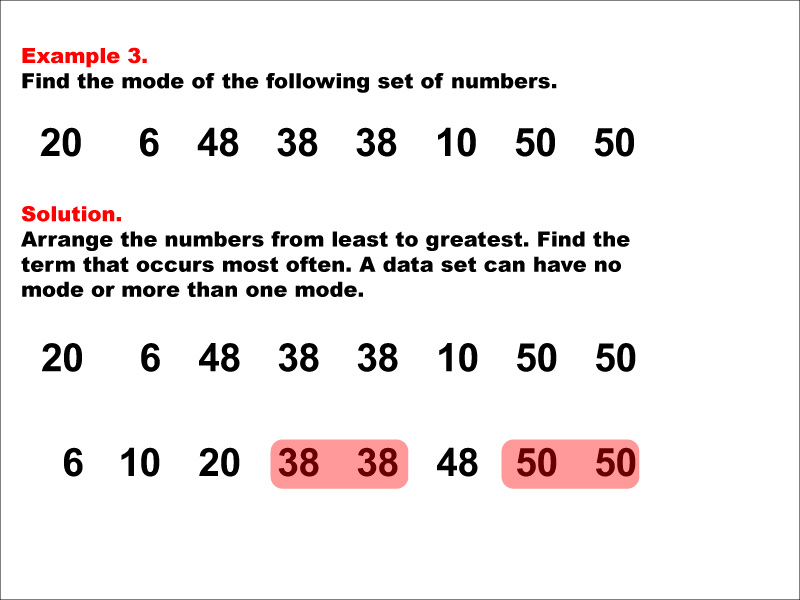
Display Title
Math Example--Measures of Central Tendency--Mode: Example 3
Display Title
Math Example--Measures of Central Tendency--Mode: Example 3

Topic
Measures of Central Tendency
Description
This example showcases a situation of measures of central tendency, where the goal is to identify a key summary measure in a set of data. This image illustrates a set of numbers with an example to find the mode. After sorting, it identifies two modes: 38 and 50. This example demonstrates that a data set can have more than one mode, which occurs when two or more numbers appear with the highest frequency.
Measures of Central Tendency lessons are instrumental in providing students with a better understanding of how to interpret data through these examples. Each example highlights distinct scenarios which reinforce the concept of determining frequency of occurrences within given sets, enhancing students' analytical skills.
Seeing multiple worked-out examples is crucial in solidifying a student's grasp on a concept. Each example contributes unique perspectives and challenges that can arise when thinking about data sets. This varied approach not only caters to diverse learning styles but also ensures that all students can see the relevance of these concepts in their learning journey.
Teacher's Script: "As you can see in this example, identifying the mode helps us to understand how often numbers appear in a data set. This is crucial for making informed decisions based on data. In this case, we've discovered that our data set has two modes, 38 and 50, which gives us valuable information about the distribution of our data."
For a complete collection of math examples related to Measures of Central Tendency click on this link: Math Examples: Measures of Central Tendency: Mode Collection.
| Common Core Standards | CCSS.MATH.CONTENT.6.SP.B.4, CCSS.MATH.CONTENT.6.SP.A.3, CCSS.MATH.CONTENT.HSS.ID.A.2, CCSS.MATH.CONTENT.HSS.ID.A.3 |
|---|---|
| Grade Range | 6 - 12 |
| Curriculum Nodes |
Algebra • Probability and Data Analysis • Data Analysis |
| Copyright Year | 2014 |
| Keywords | data analysis, tutorials, measures of central tendency, mode, average |